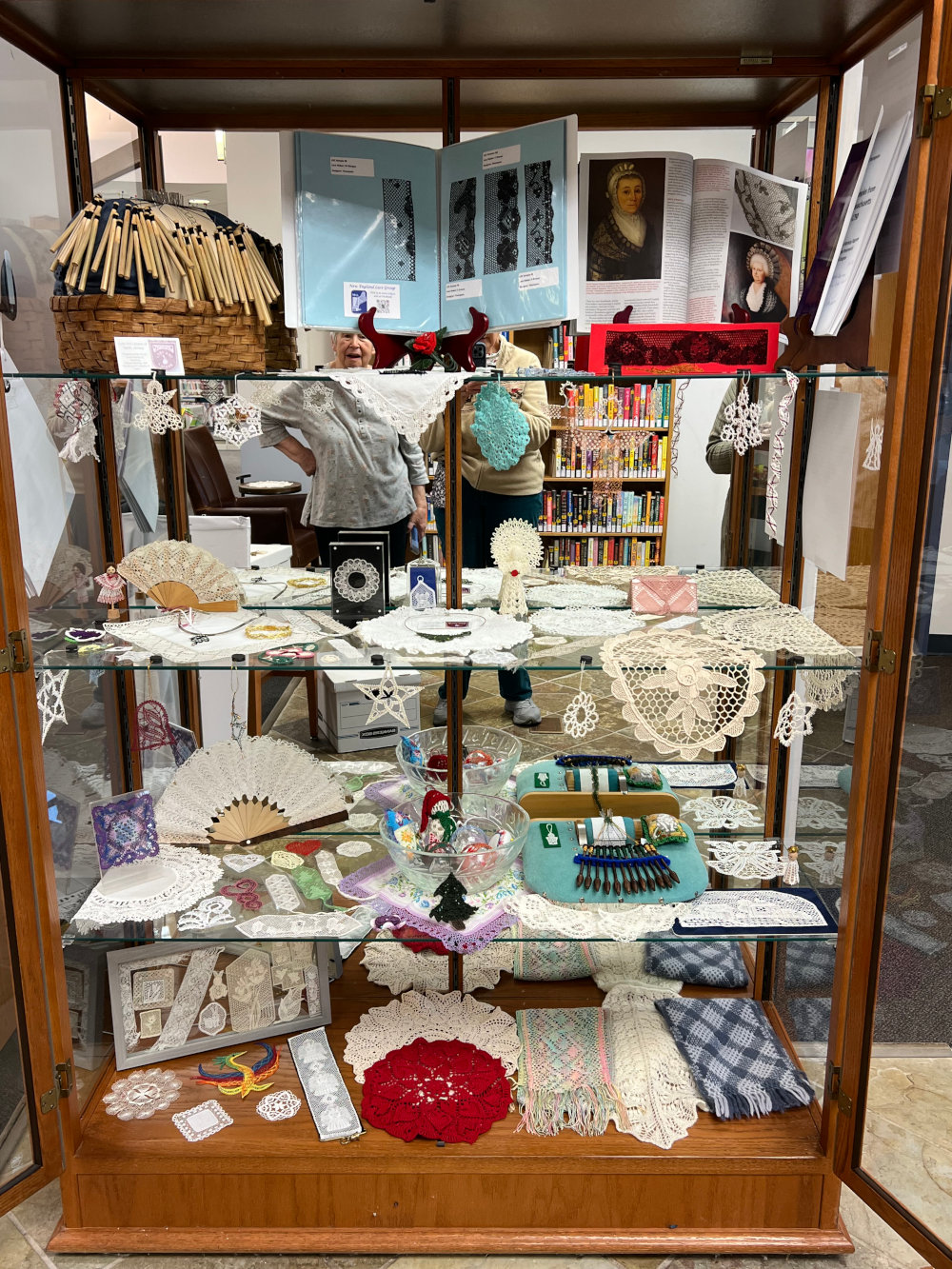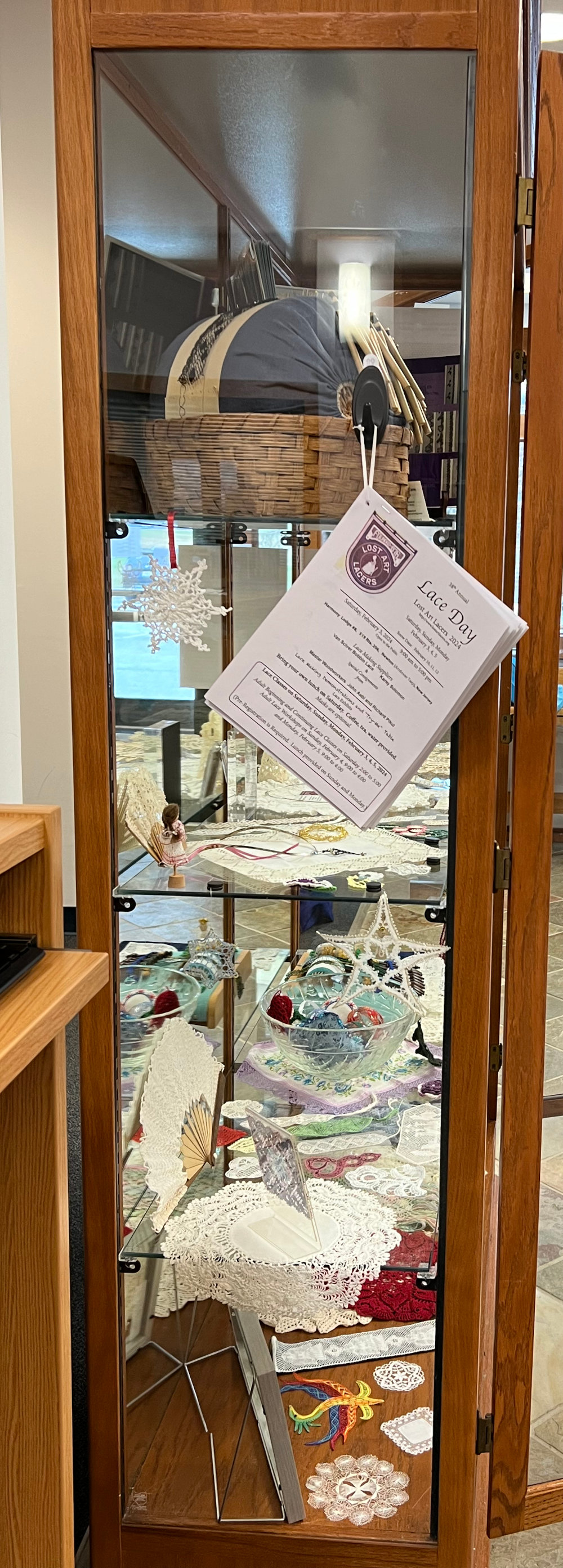The Lost Art Lacers of North Jersey (lostartlacers.org) want to share their love of lace with you. Our purpose is to preserve the art and craft of lace making, to stimulate interest in and appreciation for all facets of the history, the art and craft of lace making. We do this by demonstrating lace at various venues, giving instruction in lace making, and mounting displays in libraries.
The laces here display the many types of lace from bobbin lace, needle lace, tenerife, knitting, crochet, and tatting. Bobbin lace is also called pillow lace because it's made on a stuffed pillow with bobbins wound with thread. Some of the types of bobbin laces here are torchon, and others named for the area where they began: Milanese, Schneeberger, Flanders, Idrija, Bucks Point (Buckinghamshire), Tonder, Binche, and Ipswich.
Ipswich, the only known American handmade lace that was produced commercially, was made in Ipswich, Massachusetts. The New England Lace Guild (NELG) generously lent us part of their display on Ipswich lace that you see on the top shelf. The Ipswich pillow with hand whittled bobbins is a reconstruction (but you can see the display in the Smithsonian in Washington, DC). Most of the lace is in black silk. When George Washington became president, he sent Alexander Hamilton on a trip to find out what each colony made. Ipswich sent back samples of the lace that were made in Ipswich which you can see here on the top shelf and in the Smithsonian. The magazine on the right is open to a portrait of Martha Washington wearing a black silk Ipswich lace shawl.
The samples here were made by NELG members from a book by Karen Thompson who has reconstructed all the samples and provided the prickings (patterns) and working diagrams.



